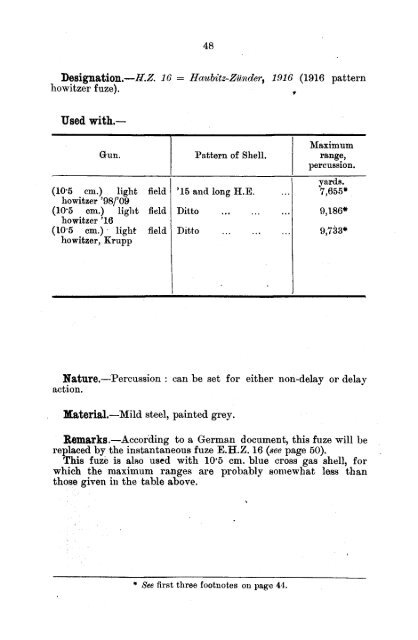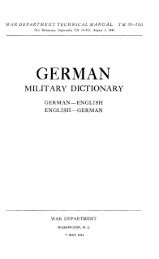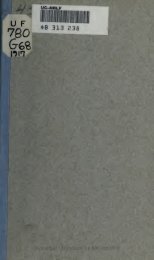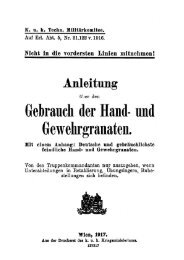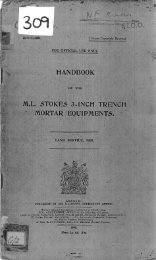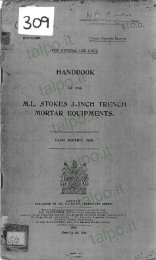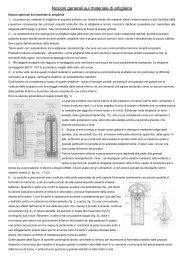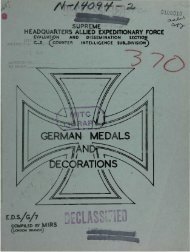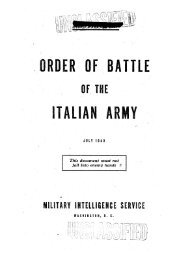Notes on German fuzes and typical French and Belgian fuzes
Notes on German fuzes and typical French and Belgian fuzes
Notes on German fuzes and typical French and Belgian fuzes
You also want an ePaper? Increase the reach of your titles
YUMPU automatically turns print PDFs into web optimized ePapers that Google loves.
—<br />
48<br />
Designati<strong>on</strong>. H.Z. 16 = Haubitz-Ziinder, 1916 (1916 pattern<br />
howitzer fuze).<br />
t<br />
Used with.—<br />
Maximum<br />
Gun. Pattern of Shell. range,<br />
percussi<strong>on</strong>.<br />
yards.<br />
(10-5 cm.) light field '15 <strong>and</strong> l<strong>on</strong>g H.E. ... 7,655*<br />
howitzer '98/'O9<br />
(10-5 em.) light field Ditto 9,186*<br />
howitzer '16<br />
(105 cm.) light field Ditto 9,733*<br />
howitzer, Krupp<br />
—<br />
Nature. Percussi<strong>on</strong> :can be set for either n<strong>on</strong>-delay or delay<br />
acti<strong>on</strong>.<br />
Material. — Mildsteel, painted grey.<br />
—<br />
Remarks. According to a <strong>German</strong> document, this fuze willbe<br />
replaced by the instantaneous fuze E.H.Z. 16 (see page 50).<br />
This fuze is also used with 10*5 cm. blue cross gas shell, for<br />
which the maximum ranges are probably somewhat less than<br />
those given inthe table above.<br />
* See first three footnotes <strong>on</strong> page 44.


